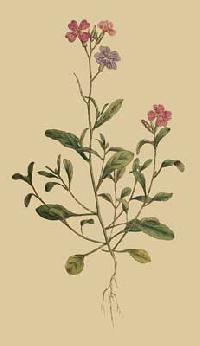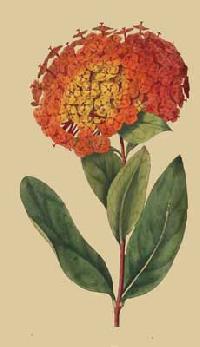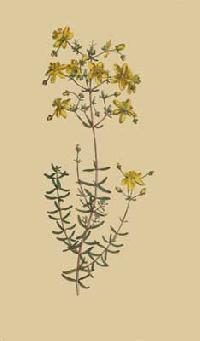
Iris Persica Persian Iris

Rudbeckia purpurea Purple Rudbeckia

Helleborus hyemalis Winter Hellebore or Aconite

Cyclamen Coum Round leavd Cyclamen

Erythronium Dens Canis Dogs Tooth or Dogs Tooth Violet

Narcissus Minor Least Daffodil

Cynoglossum Omphalodes Blue Navelwort

Helleborus Niger Black Hellebore or Christmas Rose

Iris pumila Dwarf Iris

Anemone Hepatica Hepatica or Noble Liverwort

Erica herbacea Herbaceous Heath

Dodecatheon Meadia Meads Dodecatheon or American Cowslip

Coronilla Glauca Sea green or Day smelling Coronilla

Primula Villosa Mountain Primula

Narcissus Jonquilla Common Jonquil

Iris Variegata Variegated Iris

Cactus Flagelliformis Creeping Cereus

Geranium Reichardi Dwarf Geranium

Hemerocallis Flava Yellow Day lily

Geranium Peltatum Ivy Leaved Geranium

Iris Versicolor Particoloured Iris

Nigella Damascena Garden Fennel flower Love in a mist Devil in a Bush

Tropaeolum Majus Greater Indian Cress or Nasturtium

Agrostemma Coronaria Rose Cockle or Campion

Dianthus Chinensis China or Indian Pink

Stapelia Variegata Variegated Stapelia

Convolvulus Tricolor Small Convolvulus or Bindweed

Passiflora Cerulea Common Passion Flower

Reseda Odorata Sweet scented Reseda or Mignonette

Lilium Chalcedonicum Chalcedonian Lily

Jasminum Officinale Common Jasmine or Jessamine

Mesembryanthemum Dolabriforme Hatchet leavd Fig Marigold

Aster Tenellus Bristly leavd Aster

Browallia Elata Tall Browallia

Crepis Barbata Bearded Crepis or Purple eyed Succory Hawkweed

Lilium Bulbiferum Orange Lily

Chironia Frutescens

Viburnum Tinus

Franklins Tartar

Trillium Sessile

Calceolaria Pinnata

Camellia Japonica

Cistus Incanus

Cyclamen Persicum

Crocus Vernus

Leucojum Vernum

Amaryllis Formosissima

Narcissus Triandrus

Soldanella Alpina

Iris Sibirica

Narcissus Major

Gentiana Acaulis

Cineraria Lanata

Anemone Sylvestris

Geranium Striatum

Geranium Lanceolatum

Papaver Orientale

Iris Spuria

Mesembryanthemum Bicolorum

Lathyrus Odoratus

Iris Ochroleuca

Centaurea Glastifolia

Fragaria Monophylla

Hemerocallis Fulva

Clematis Integrifolia

Passiflora Alata

Mesembryanthemum Pinnatifidum

Sempervivum Arachnoideum

Rosa Muscosa

Mesembryanthemum Barbatum

Statice Sinuata

Helleborus Lividus

Monsonia speciosa

Antirrhinum triste

Potentilla grandiflora

Epilobium angustissimum

Centaurea montana

Narcissus odorus

Spigelia Marilandica

Colutea Arborescens

Lachenalia Tricolor

Hibiscus Syriacus

Tussilago Alpina

Spartium Jungeum

Gladiolus Communis

Hyoscyamus Aureus

Narcissus Bulbocodium

Viola Pedata

Gorteria Rigens

Iris Susiana

Saxifraga Sarmentosa

Sempervivum Monanthes

Sisyrinchium Irioides

Geranium Radula

Lantana Aculeata

Fuchsia Coccinea

Antirrhinum Purpureum

Lathyrus Tingitanus

Alyssum Halimifolium

Campanula Speculum

Pelargonium Acetosum

Lysimachia Bulbifera

Tradescantia Virginica

Iberis Umbellata

Anthyllis Tetraphylla

Lavatera Trimestris

Mimosa Verticillata

Lathyrus Tuberosus

Cistus Ladaniferus

Convolvulus Purpureus

Silene Pendula

Lathyrus Sativus

Limodorum Tuberosum

Campanula Carpatica

Sedum Anacampseros

Strelitzia Reginae

TRELITZIA REGINae

Narcissus Incomparabilis

Hyacinthus Racemosus

Anemone Hortensis

Iberis Gibraltarica

Alyssum Deltoideum

Ixia Flexuosa

Scilla Campanulata

Amaryllis Vittata

Alyssum Utriculatum

Catesbaea Spinosa

Rubus Arcticus

Hyacinthus Comosus

Adonis Vernalis

Gladiolus Cardinalis

Pelargonium Tetragonum

Hypericum Balearicum

Kalmia Hirsuta

Lupinus Luteus

Heliotropium Peruvianum

Scorzonera Tingitana

Pelargonium Glutinosum

Ferraria Undulata

Monarda Fistulosa

Hypericum Calycinum

Dais Cotinifolia

Pelargonium Betulinum

Zinnia Multiflora

Tagetes Patula

Lotus Tetragonolobus

Epidendrum Cochleatum

Bulbocodium Vernum

Saponaria Ocymoides

Oxalis Versicolor

Coreopsis Verticillata

Hyacinthus Botryoides

Hibiscus Rosa Sinensis

Alyssum Saxatile

Pulmonaria Virginica

Amygdalus Nana

Sanguinaria Canadensis

Phlox Divaricata

Ranunculus Gramineus

Pelargonium Cordifolium

Cheiranthus Maritimus

Sophora Tetraptera

Iris Pavonia

Ixora Coccinea

Draba Aizoides

Ixia Chinensis

Lamium Orvala

Aitonia Capensis

Buddlea Globosa

Kalmia Latifolia

Cytisus Laburnum

Kalmia Glauca

Hypericum Coris

Fumaria Glauca

Azalea Nudiflora

Colutea Frutescens

Salvia Aurea

Syringa Vulgaris

Ixia Crocata

Coronilla Valentina

Selago Ovata

Iris Sambucina

Convolvulus Nil

Erica Grandiflora

Ornithogalum Aureum

Primula Marginata

Cypripedium Acaule

Narcissus Angustifolius

Fritillaria Imperialis

Cheiranthus Mutabilis

Saxifraga Crassifolia

Narcissus Biflorus

Indigofera Candicans

Aster Alpinus

Antirrhinum Sparteum
